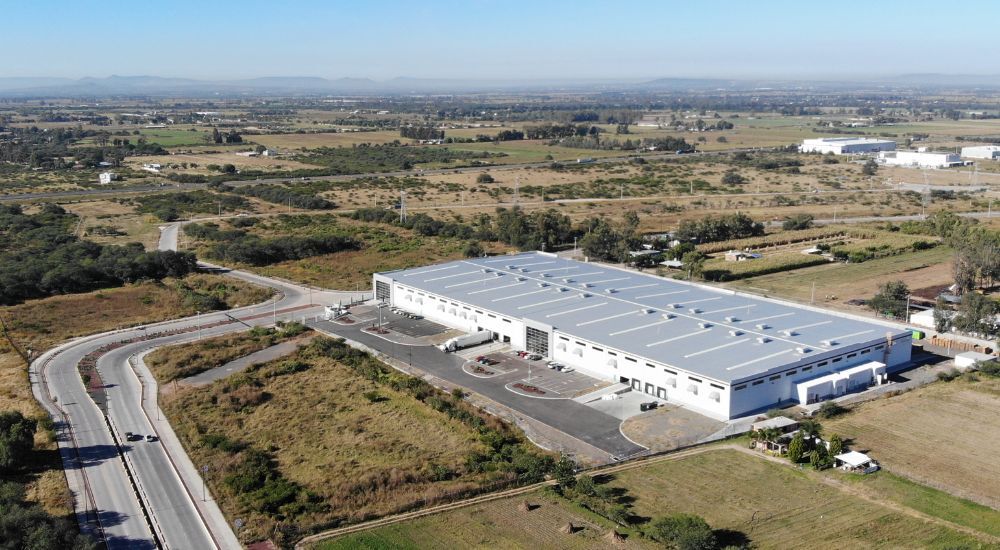Key industries driving US-Mexico trade due to nearshoring
28/11/2023As the main commercial ally of the United States, Mexico is taking advantage of the nearshoring vs. offshoring dynamics in various industries and areas. These are reflected in the commercial activities between both countries.
Nearshoring dynamics have made it easier to manage supply chains for various industrial activities and to enhance the commercial relationship between both countries. Automotive pieces and electronic devices are among the goods that have increased commerce for the two nations in recent years.
With a border that registered trade for US 779.3 billion dollars in 2022, medical supplies, agricultural goods, and machinery are important for cargo transportation.
Since the onset of the global COVID-19 pandemic, nearshoring activities have bolstered the Mexican economy by offering key advantages to US enterprises seeking to enhance agility in their operational schemes. These include the technical skills and cost-effectiveness of the Mexican workforce, streamlined production scheduling within a unified time zone, and reduced transportation times for raw materials and manufactured godos. The dynamics of trade between the two countries reflect this situation.
E-commerce increased the need for cross-border trade between Mexico and the United States. Many US enterprises take advantage of the nearshoring benefits to compete with global retailers.
An overview of US-Mexico trade
Mexico is the largest Spanish-speaking country in the world, and the second-largest economy in Latin America. It has deep trade and investment ties with the United States. The US market is the largest export market for Mexico, accounting for 55 % of its total exports and growing year by year. In 2017, the trade between the two countries reached nearly US 614 billion dollars in goods, with US exports including electronic devices, vehicles, fuels, minerals, plastics, and machinery.
Mexico figured as the second-largest destination for U.S. agricultural exports in 2021, importing US 18.3 billion dollars, including corn, soybeans, dairy, pork, and poultry meat among the products. This relationship provides growth opportunities for companies on both sides of the border.
Automotive industry in US-Mexico freight
Currently, Mexico ranks as the seventh-largest global passenger vehicle manufacturer, with an annual production of nearly three million vehicles, and 90% of these vehicles are made for export, with 76% of this production being sent to the United States.
Renowned automakers have established factories in Mexico, where there are manufacturing facilities for producing Audi, BAIC Group, BMW, Stellantis (Fiat Chrysler Automobile and PSA Group), Ford, General Motors, Honda, Hyundai, JAC, Kia, Mazda, Mercedes-Benz, Nissan, Toyota, and Volkswagen vehicles.
The automotive industry is one of the most significant contributors to the US-Mexico trade relationship. Mexican exports to the United States include various products, such as light trucks, passenger vehicles, and auto parts. The United States exports primarily comprise components to vehicle production, including engines, transmissions, and electronics.
This sector has important effects, optimizing transportation efficiency for automakers on both sides of the border and generating employment opportunities for various industries.
The cross-border automotive trade has also been boosted by initiatives like the US-Mexico-Canada Agreement (USMCA), which provides clear rules of origin and preferential duties for specific products.
Agricultural goods
The agricultural sector plays a crucial role in the US-Mexico trade relationship, with an exchange of over US 28 billion dollars worth of agricultural products in 2022. Mexican exports to the United States encompass a wide range of items, such as vegetables, fruits, beverages, distilled spirits, and other perishable goods.
The United States exports to Mexico include grains and oil seeds as the dominant categories. This trade has great importance to both nations.
For Mexico, exporting agricultural products to the United States provides access to advanced technology to farmers who consider it an essential resource and might not be able to reach it in other scenarios. It helps by increasing productivity and competitiveness within Mexico's agricultural sector.
The United States, on the other hand, benefits from Mexico's substantial population and surging demand for agricultural goods, positioning US producers to tap into a growing market.
Electronic components in US-Mexico exchange
Mexico has solidified its position as a key player on the global stage regarding electronic components, with deep-rooted ties to the United States. This industry has evolved into one of the main manufacturing sectors for the Latin American country.
Mexico has attracted some of the world’s top transnational electronics manufacturing services companies, with nine of the top ten enterprises in this sector establishing a foothold in the country. Recognizable names such as Samsung, LG, Toshiba, Foxconn, Flextronics, and Intel have found a good environment for their production activities in Mexico’s electronics industry.
Benefits of US-Mexico trade
Through increased trade, both countries have access to a wider range of products that would otherwise be unavailable or unaffordable. This dynamic also encourages mutual economic development by creating employment and investment opportunities for the two countries.
Nearshoring dynamics have taken the trade relationship between Mexico and the United States to a new level, by boosting manufacturing and transportation activities in the Latin American country and allowing US enterprises to establish operations near the consumption area.
In a nearshoring vs. offshoring scenario in which US companies might look to establish activities in Mexican territory, Frontier Industrial offers industrial buildings for rent and land for sale, with the possibility of developing Build-to-Suit projects for industrial activities in the most important areas of Mexico. If it’s the landscape of your enterprise, feel free to contact us and receive more information.






